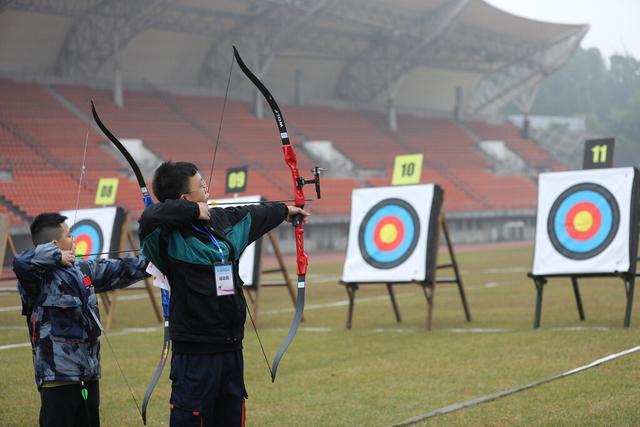Bow: Archery athletes use bows and arrow equipment that are the result of modern technology and have good performance. A sight can be installed on the bow, and stabilizers or arrow flight shock absorbers are allowed to be installed, but they are not allowed to be used for string aiming and cannot touch other objects. The types of modern bows can be divided into composite bows and recurve bows. A recurve bow is mainly composed of a bow handle, bow pieces, sight, signal pieces, arrow platform, and balance bar (V-shaped seat, extension bar, push handle, long bar, side bar).
Arrows: Arrows include arrows, shafts, tails, and feathers. The style of arrows and the color combination of arrow feathers used in the same group competition must be the same. Each athlete's arrow should be labeled with their name or abbreviation to distinguish themselves.
Arrow target: There are generally two types of targets used in archery competitions: square and circular. The arrow target is made of straw and linen or other suitable materials. The side length and diameter of the arrow target shall not be less than 124 centimeters, and the thickness is generally between 15-25 centimeters. The target of the arrow should be sturdy, durable, and moderately hard, so that the arrow is easy to shoot without damage, and not easy to penetrate, rebound, or fall off.
Target frame: The frame that supports the arrow target is called a target frame, which is made of wood or bamboo and is required to be sturdy but not cause damage to the arrow. The target rack is placed diagonally on the finish line, at an angle of about 10-15 degrees to the vertical line of the ground. The height of each ring target center from the ground should be 130 centimeters, and they should all be in a straight line.
Ring target: The ring target is circular with a diameter of 122 centimeters, consisting of five concentric circular color zones of equal width from the center to the outside: yellow, red, light blue, black, and white. Each color zone is divided into two equally wide zones of the same color by a thin line, forming 10 equally wide ring zones. Within the 10 ring zones, there is a central ring called the inner 10 ring zone, which is used to evaluate the ranking of some rings with the same number of rings. The zoning loop is located within the high ring area. The outer edge of the outermost white area is marked within the designated area. The line width shall not exceed 2 millimeters. The center of the ring target is marked with a "+" symbol and is called a pinhole. The line width of the "+" symbol shall not exceed 1 millimeter. Ring targets can be made of paper, cloth, or other suitable materials, but in the same competition, all materials are required to be the same and of uniform specifications.
Timing device: The official name of this device is "timer signal light", abbreviated as "timer" or "signal light".
Other equipment: Athletes can wear some protective gear, including archery finger guards (hand leather pads), arm guards, chest guards, archery glasses, and sunglasses. These equipment must comply with the rules of the International Arrow Federation. Before the archery competition, the bow, arrow, finger guard (hand guard), and glasses used by athletes must be inspected by the referee to comply with the competition rules.
